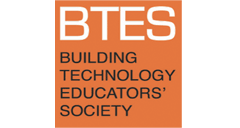Lessons from an Integrated Design Course
Abstract
Integrated design is an activity that promises improved built outcomes by factoring technical and performance goals throughout the entire design process. It acknowledges that technical knowledge, typically provided by engineering consultants, is generally layered onto schematic design ideas. Often these specialists do not internalize the visions of architects and stubbornly assert themselves. Additionally, environmentally responsible architecture is best conceived of holistically, especially if passive design strategies are to offset mechanical and electrical solutions that are historically accepted as the appropriate way to solve for larger objectives of thermal and visual comfort. In architecture school, knowledge understood to be necessary to achieve integrated design has largely been relegated to technical courses executed in a lecture format. A benefit of utilizing a lecture format for these courses is that they are suitable to foregrounding and evaluating factual information. Drawbacks to relying on a lecture class format for technical subjects include large class sizes and limited opportunities for project work; factors that are compounded by limits of time in required courses for addressing technical knowledge. Challenges to integrating technical knowledge into studio courses includes the notion that foundational knowledge is best introduced outside of the studio, although some programs have incorporated engineers as studio consultants and studio instructors. A premise of the experiment addressed in this paper is that architects are synthesizers of knowledge and better qualified than engineers at recognizing social, programmatic and visual factors as relate to design and building. In other words, the art of architecture cannot be separated from creating a material artifact. This means that effective architects are needed if integrated design is to be realized consistently and that relying on practice as the place where integrated design skills are introduced is not adequate. Another premise is that integrated design outcomes need to be assessed in relation to criteria unique to the project as well as criteria from outside such as code. Like architecture in general, there is no single litmus test for successful integrated design. In this light, integrated design is not achievable without a program tailored to the project and designers who value the expressive potential of design, building construction and building performance. Given the opportunity of running an elective graduate research seminar, the author of this paper introduced a design problem for a small building (artist’s studio) with the expectation that students could manage and recognized conflicts related to program objectives and technical factors. Key to this effort was forcing students to identify and acknowledge design criteria that they developed. Prior to engaging in design, students participated in discussions on readings related to integrated design theory. At the conclusion of the design process, students were tasked with reflecting on the theory and their experience balancing tensions between design criteria which were unique to each student. Challenges included showing students that art and construction realities are compatible.
Keywords: Integrated, Sustainability, Goals, Criteria, Programming
How to Cite:
Fordham, C., (2023) “Lessons from an Integrated Design Course”, Building Technology Educators’ Society 2023(1), 227-231. doi: https://doi.org/10.7275/btes.1956
Downloads:
Download PDF
